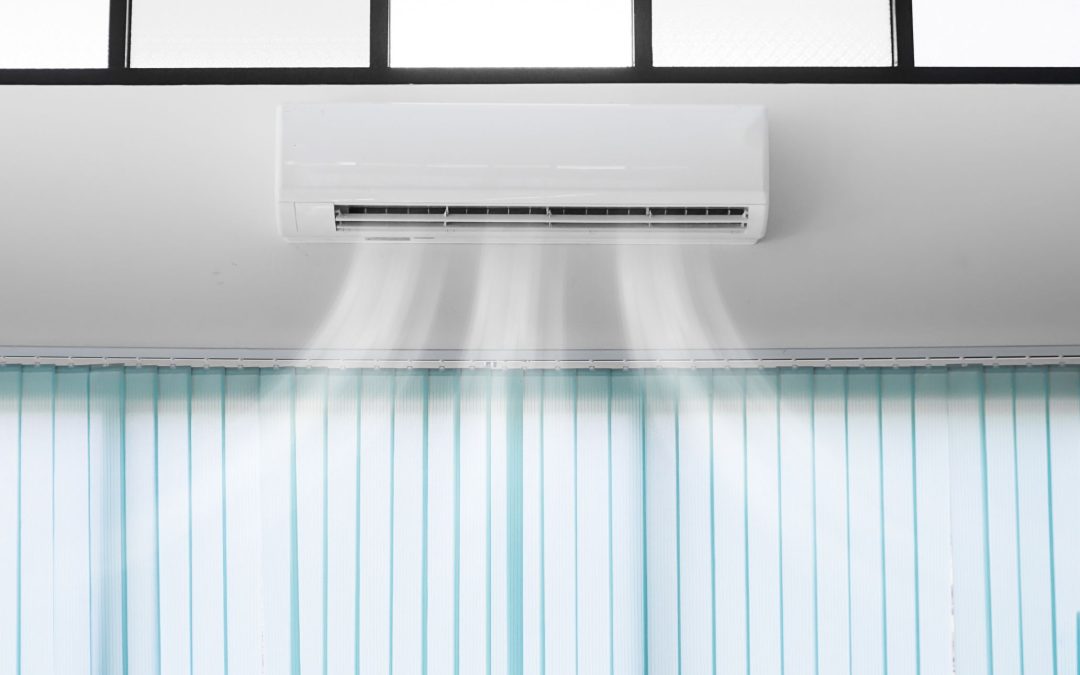Accumulated debris and dust:
A typical, less concerning cause of “smoke” appearing inside the air conditioner is dust and particle build-up. These particles may eventually land on the unit’s evaporator or condenser coils, among other parts. When the system works, the heat it produces may burn off the collected material, producing a visible cloud that looks a lot like smoke. This problem may be avoided with routine maintenance, which includes hiring a skilled HVAC service provider and cleaning or replacing your filters. Maintaining the unit’s cleanliness lowers the possibility of junk accumulation and guarantees the system works well.
Leaks in refrigeration:
A refrigerant system is essential to an air conditioning system’s correct operation. A refrigerant leak may cause vapor to be released, which could appear like smoke. Not only can refrigerant leaks be detrimental to the environment, but they can also reduce the effectiveness of the system. It is imperative that you turn off your air conditioner right away and call a licensed HVAC professional if you think there may be a refrigerant leak. They are able to locate and fix the leak, replenish the refrigerant, and guarantee the safe functioning of your system.
Electric problems:
The emergence of smoke-like emissions might also be attributed to electrical issues with the air conditioner. Overheating and the emission of smoke or vapor can be brought on by faulty wiring, overloaded circuits, or damaged electrical components. It is dangerous to try to diagnose or fix electrical problems on your own. If your air conditioner is having electrical issues, get in touch with a qualified electrician or HVAC specialist to diagnose and fix the issue.
Burning smells from components:
When under stress or malfunctioning, certain parts of an air conditioning system might release an odor similar to burning. Problems like a broken fan, a failing motor, or damaged cables can be the cause of this. A visible emission that could resemble smoke could be produced if any of these parts are damaged. HVAC specialists can help detect and resolve any component problems on a regular basis before they become serious concerns. Prompt replacements or repairs can stop additional harm and keep your system operating at peak performance.
Obstructed drain pipe:
Condensation is eliminated by your air conditioning system’s drain line. It may clog with debris, mold, or algae over time, which could cause a water backup in the system. This water may produce vapor or steam, which may seem like smoke when it comes into touch with heated components. Clogs can be avoided and appropriate drainage can be ensured by routinely cleaning the drain line and hiring professionals for maintenance.
Fan or motor failure:
Your air conditioner’s fan and motor are essential to the cooling process. There may be overheating and the release of smoke or vapor if one of these parts fails. Frequent upkeep, such as lubricating moving parts, can increase these components’ lifespan and lower the risk of failure. It is best to have your air conditioner tested right away if you hear strange noises or odors emanating from it. This will help to discover and resolve any potential problems with the fan or motor.
Things in the ductwork:
Sometimes, materials like paper or plastic might get into the air conditioning system’s ducting. Smoke may be produced when these items come into touch with heated parts of the system while it is operating. Maintaining adequate airflow and preventing the build-up of items can be achieved through routine duct cleaning and inspections. A professional ductwork inspection is advised if you observe frequent smoke-like discharges. They can locate and eliminate any obstacles enhancing your HVAC system’s overall functionality.
Thermostat not working:
Your air conditioner may run unpredictably due to a broken thermostat, which can result in overheating and the release of smoke or vapor. Different parts of the system may be under stress if the thermostat is not reading temperatures correctly or is giving the wrong signals to the system. Such problems can be avoided by giving your thermostat routine adjustments and maintenance. Speak with an HVAC professional if you think there may be a thermostat issue in order to guarantee precise temperature control and avoid putting excessive strain on your air conditioning system.
Burning insulation:
Your air conditioning system has a number of insulated parts. Wear and tear and prolonged exposure to high temperatures can cause this insulation to deteriorate over time. Emissions resembling smoke may be produced if the insulation starts to burn. This problem is frequently accompanied by a characteristic burning odor. It is imperative that you turn off your air conditioner right away and speak with a qualified technician if you suspect burning insulation. To guarantee the security and effectiveness of your system, they can evaluate the circumstances, pinpoint the issue’s origin, and replace any damaged insulation.
Compressor problems:
One essential part that keeps the refrigerant flowing through the system is the compressor. Vapor may leak out and the compressor may overheat if it is broken or having problems. It’s possible to confuse this vapor with smoke. Regular upkeep can help avoid issues with the compressor, such as lubricating moving parts and looking for wearing signs. It’s essential to speak with a licensed HVAC professional for a comprehensive evaluation and any necessary repairs if you think there may be a problem with the compressor.
Extremely high humidity:
High humidity areas can occasionally produce a visible vapor as a result of the interaction between humid air and the cooled air conditioner components, especially in the warmer months. This appears to be condensation forming due to the temperature differential rather than smoke. Although this is usually a common occurrence, high humidity can also lead to additional issues like mold growth or electronic component damage. Potential problems can be reduced by maintaining the right humidity levels with suitable ventilation and, if needed, the use of a dehumidifier.

